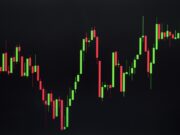Gold recently reached a new record high of around $2,610 per ounce, more than ten times its low of just over $253 per ounce back in 1999. This surge comes at a time when the U.S. government is projected to spend a record $1.2 trillion on interest payments in 2024, marking the first time interest payments have surpassed military spending. It’s no coincidence that both events are happening simultaneously.
For those who are long-term investors, gold’s rise isn’t just about short-term fluctuations—there’s a strong fundamental case supporting this trend. But it’s important to understand why gold is performing the way it is, and how to navigate potential opportunities, especially if you’re thinking of using options rather than buying physical gold directly.
Why Gold Is Rising
Gold has long been viewed as a safe-haven asset, one that tends to benefit when economic and geopolitical uncertainties are high. It also has a low correlation with other asset classes, making it an effective hedge in times of market volatility. Carter Braxton Worth from Worth Charting recently emphasized on CNBC’s Fast Money that during significant declines in the S&P 500 (specifically, drops of over 20%), gold has almost always risen, except for one instance. This highlights gold’s unique role as an uncorrelated hedge.
For investors who hold physical gold, this asset is typically held through market fluctuations. Unlike stocks, which are often sold during volatile periods, physical gold holders tend to stick with it, contributing to its stability in times of stress.
Central Bank Activity and Its Impact
One particularly interesting development is the recent behavior of central banks, especially Saudi Arabia. Historically, Saudi Arabia has been a key player, buying gold when prices dipped and selling when prices rose. However, the country has continued to buy even as prices have soared, which could indicate a shift in their long-standing strategy. Given Saudi Arabia’s pivotal role in global energy markets and the dollar’s reserve currency status, this is a noteworthy change.
On a broader scale, central banks worldwide have been amassing gold at impressive rates. In 2023, central banks purchased 1,037 metric tons of gold, with China buying 225 tons, marking its largest purchase since 1977. These strong purchasing trends have continued into 2024, with central bank activity in the first quarter ranking fourth in the past two years. For context, one metric ton is 1,000 kilograms or about 1.1 U.S. tons.
Is Gold Overbought?
Despite these positive fundamentals, there are signs that gold may be slightly overbought in the short term. Over the last 20 years, the average 30-day return on gold has been about 79 basis points (0.79%). However, when the 14-day RSI (Relative Strength Index) exceeds 70, that average drops to 37 basis points.
As of the most recent close, the RSI for gold stood at 69.147, which suggests it’s nearing overbought territory. While this doesn’t mean gold will immediately drop, it’s a signal for investors to proceed with some caution in the near term.
A Potential Trade Using Options
If you’re looking for a way to capitalize on gold’s momentum without directly buying the metal, you might consider an options strategy on the SPDR Gold Shares (GLD), which tracks gold prices. One potential approach involves purchasing a longer-dated call option while selling a nearer-dated strangle to offset decay.
Here’s how that trade could look:
- Sell an October 18 GLD $228 put
- Buy a January 17 GLD $240 call
- Sell an October 18 GLD $255 call
This strategy allows you to participate in gold’s upside while managing time decay, though it comes with the risk of having to buy GLD at a price about 5% lower than its current value if the price drops. The good news is that declines of more than 5% in gold over a 30-day period are relatively rare, occurring less than 10% of the time.
Final Thoughts
Gold’s recent surge has caught the attention of many investors, especially as we move into a period of heightened economic and political uncertainty. While physical gold remains a strong asset for many, options can provide another way to benefit from gold’s movement without requiring the upfront cost of buying the metal itself.
As always, it’s important to stay informed and weigh the risks, but with central banks continuing to buy and volatility on the rise, gold remains a strong contender in today’s market. Whether you’re holding the metal itself or trading options on GLD, gold’s record highs offer intriguing possibilities for investors looking for a hedge in uncertain times.





